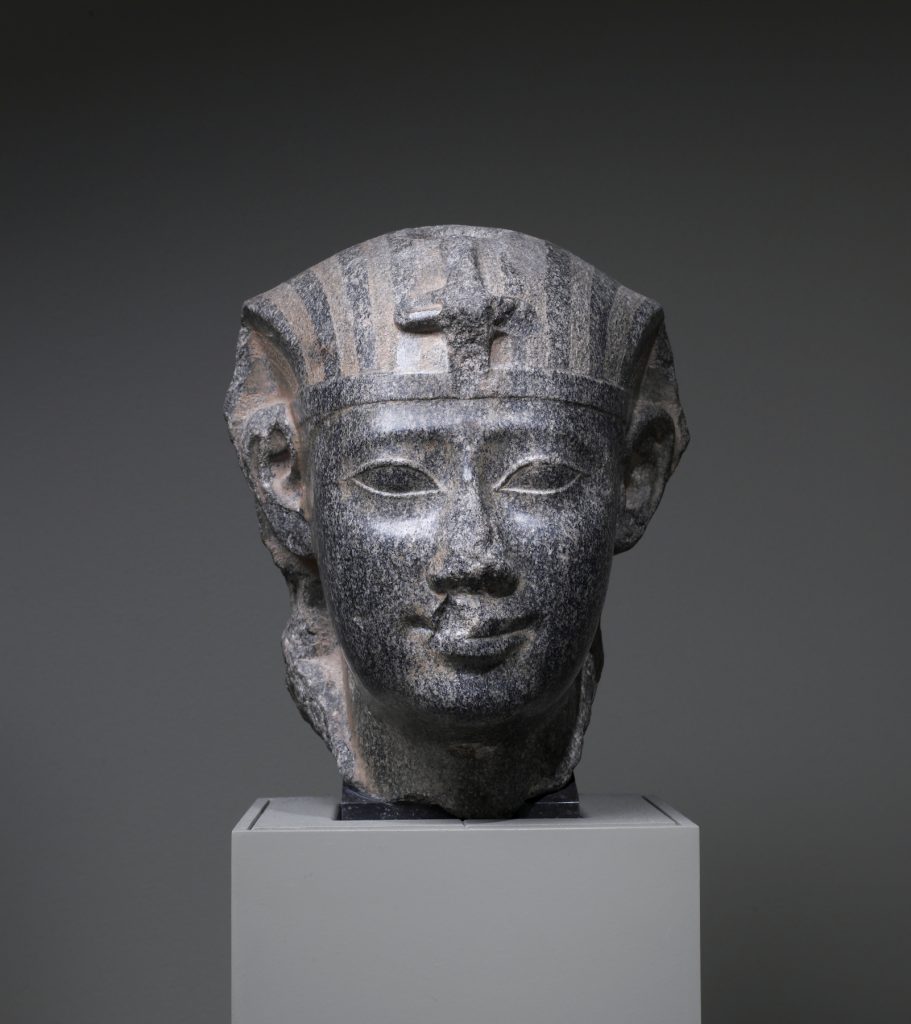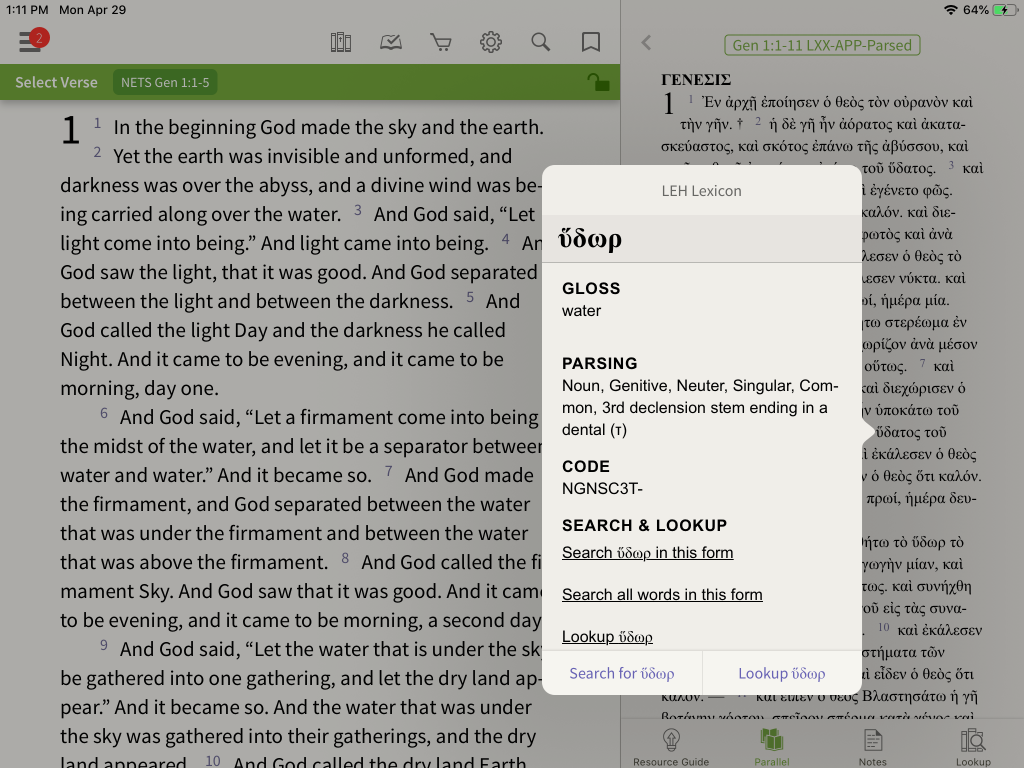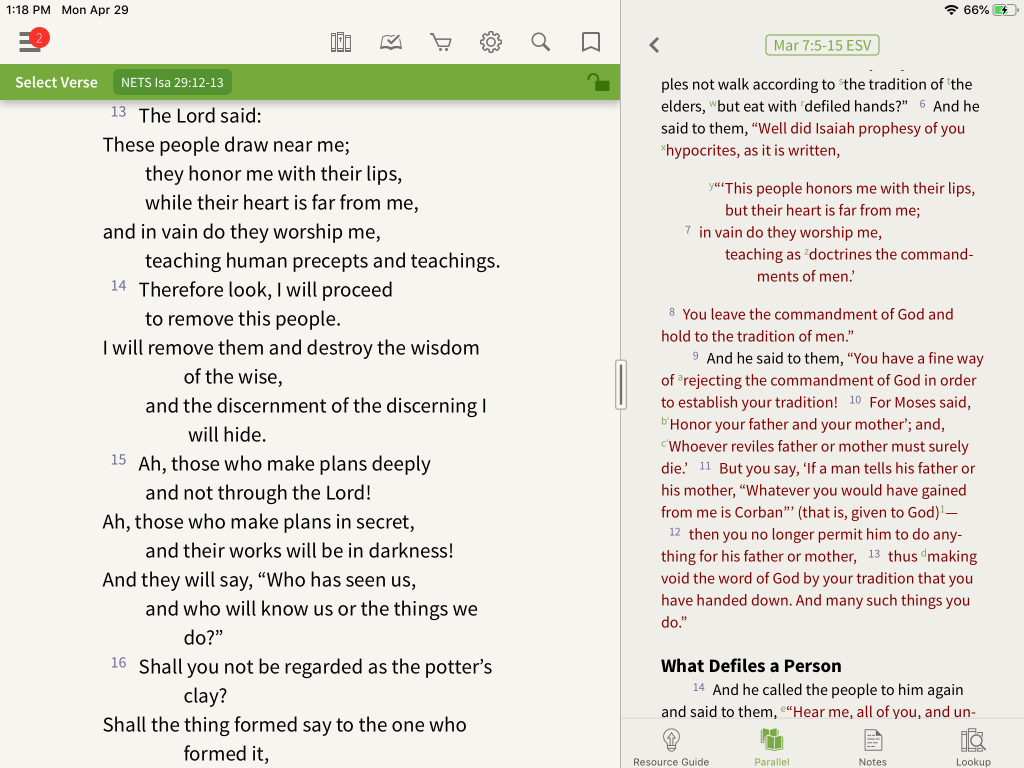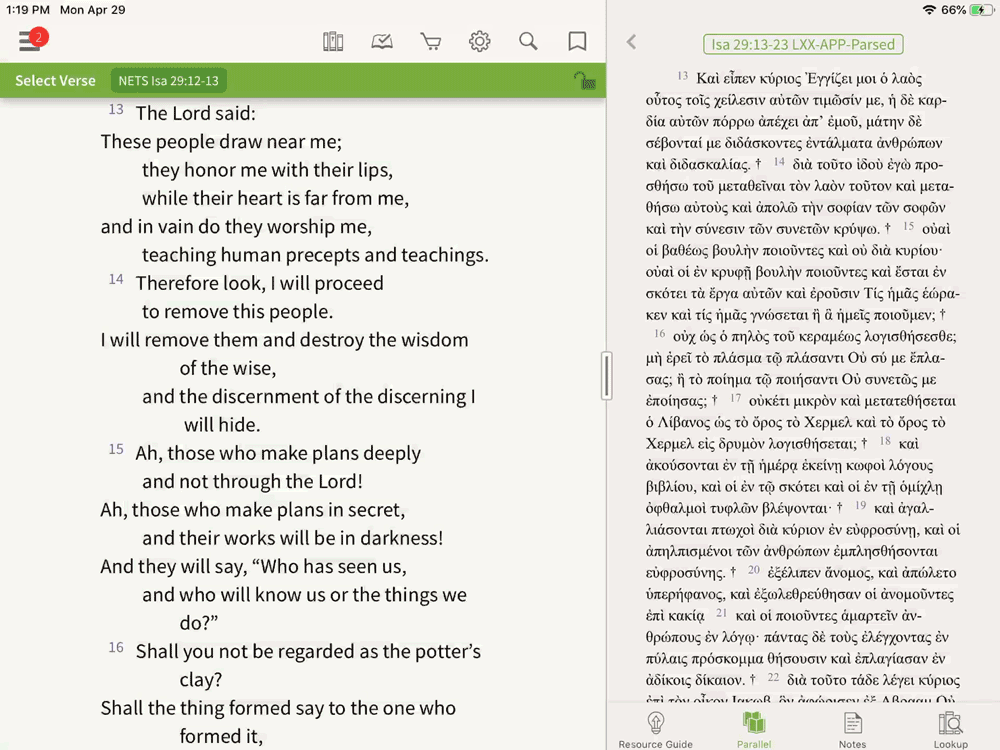Did Jesus and Paul Read the Septuagint
The New English Translation of the Septuagint (NETS) is a fascinating resources—especially, if you're interested in textual criticism. And, since it is a well-loved resource by Olive Tree employees, we took extra intendance in making it work well inside the app.
In this mail service, we'll cover what NETS is and how it can be helpful in your study. Lastly, we'll show how it works in the app.
Really, WHAT IS Information technology?
The New English language Translation of the Septuagint (NETS) is exactly what it sounds like: a translation of a translation.
With NETS, you lot tin read a paragraph-form English language Bible that translates the Greek understanding of the Hebrew One-time Attestation works.
In the preface, the NETS committee shares their ii aims of this translation:
- to give a faithful translation of the Greek, both in meaning and fashion of expression
- to create an English language tool for the synoptic study of Hebrew and Greek texts of the Bible
Before digging further into NETS, let's discuss where the Septuagint (70) comes from and where it is used in history.
HISTORY
CREATION OF THE SEPTUAGINT
Rumor has it, lxx or so Jerusalem elders were ordered to translate Scriptures popular to Egyptian Jews into Greek. This happened erstwhile between 300 and 200 BC, under the guild of King Ptolemy II. Boosted rumors state that these translations took place on an island and took seventy-two days to complete.

The Scripture simply contained the five books of Moses—the Pentateuch. Then, boosted books were translated in the following centuries, in various locations.
Because of the legend, and all the details surrounding "seventy," the writings were dubbed "the translation of the seventy." Thus, we now call information technology the "Septuagint."
Use OF THE SEPTUAGINT (Lxx)
The New Testament writers refer to the LXX in their writings more often than not. Although information technology would be neat to say that Jesus himself referenced the Seventy, nosotros can't be certain of those claims. At to the lowest degree, Jesus quoted the OT in Aramaic and the NT writers translated it to Greek—which, is nevertheless inspired.
PROCESS
When you read the title of NETS, you lot might assume the translators created an English translation based on a completed Septuagint translation. Simply recall, these translators are smart. When they know a good way to save time and exist authentic, they are going to use information technology!
So, they based NETS off the New Revised Standard Version (NRSV). If you know anything about the NRSV, you're probably confused. The NRSV is a literal translation that often represents the Hebrew significant of words in the Old Testament.
Withal, the NETS committee chose the NRSV as the base text because the translational approach still works well with the LXX, and it has widespread popularity.
WHEN DOES NETS DIFFER FROM THE NRSV?
When NETS differs from the NRSV, it happens for i of six reasons:
- The lexical choice of the NRSV to represent the Hebrews is very different from the Greek
- If a difference in translational approach occurs betwixt NRSV and Greek translation, ex.: the Greek is hyper-literalistic where the NRSV is not
- Word echoes, paratactic way, or other Greek linguistic features crave modifications to the NRSV
- The Greek translator created a text at variance with the Masoretic Text (MT: authoritative Hebrew and Aramaic text)
- At times, the NRSV chose gender-inclusive and explicit linguistic communication and NETS is choosing to abjure
- The NRSV did not translate the MT in some places, using another reading
WHY WOULD I Want TO READ Information technology?
There are a few ways you can use NETS to get a bigger motion picture of what Scripture is trying to say. Hither are three, although there are nigh likely more!
In fact, if you love using NETS, we'd honey for you to share how y'all apply this resource in the comments.
NETS AND THE NRSV
Knowing that NETS is based on the NRSV texts opens upwardly a world of possibilities. If you compare NETS and the NRSV side-past-side, you can know that whatsoever differences are due to the preferences outlined above.
Specifically, you tin look at the NRSV to understand how the Hebrews interpreted the Old Testament. Then, read NETS to sympathize how the Jews believed it to be best understood in the Greek world.
With both of these translations, yous can come across the Bible from ii, accurate yet dissimilar, linguistic angles.

NETS AND THE SEPTUAGINT
No affair where you are at with your Greek, the Bible speaks to our hearts outset and foremost in our chief language. So although reading the LXX tin can be a proficient exercise and push button your listen to report the Give-and-take in-depth, having a reliable English translation next to information technology tin can brand a huge difference in awarding.
By using NETS, instead of a more than common translation, you'll be aided in your understanding of the Greek. And if yous feel confident reading the Greek as is, use NETS to check yourself as you become.

NETS AND THE NEW Testament
Since the NT writers often quote the LXX, using NETS for OT cross-references tin be enlightening. Compare and dissimilarity these references with Hebrew-based translations. What layer of meaning does the Greek add to the text?

WHO PUT NETS TOGETHER?
Albert Pietersma
Pietersma is Professor of Septuagint and Hellenistic Greek at The University of Toronto. He holds iii degrees:
- B.A. Classics and Philosophy, Calvin College, Grand Rapids Michigan, 1962
- B.D. Calvin Theological Seminary, Thousand Rapids Michigan, 1965
- Ph.D. Hebrew Language and Literature (Septuagint), University of Toronto, 1970. Dissertation: "A Textual-Disquisitional Analysis of Chester Beatty Biblical Papyri IV and 5."
Benjamin G. Wright
Wright is the Academy Distinguished Professor of Faith Studies, Bible, Early Judaism, Christianity at Lehigh University. He as well holds three degrees:
- B.A. Philosophy/Religion, Ursinus Higher
- G.Div. Biblical Studies, Eastern Baptist Theological Seminary
- Ph.D. Christian Origins, University of Pennsylvania
NETS IN THE OLIVE TREE BIBLE APP
NETS versification is based on the Göttingen Septuaginta. All the same, we structured NETS to align with the Rahlfs Seventy in the Olive Tree Bible App.
By and large, you lot will navigate to the verse that you intend to see. However, there a few places with variances. Nosotros take y'all to the Rahlfs Seventy reference in NETS to amend your experience in the app. If you cull to do a parallel written report with the LXX and NETS, using Ralhfs 70 allows the resources to stay in sync while you scroll. See a list of all the variances hither.

Lastly, nosotros want to permit you know that Rahlfs LXX does append the "Additions to Esther" to the volume of Esther. We have done the same.
Go THE NEW English TRANSLATION OF THE SEPTUAGINT
Does all this information get y'all excited to written report the Old Testament? So NETS is definitely a resources for you.
Source: https://www.olivetree.com/blog/new-english-translation-septuagint/


0 Response to "Did Jesus and Paul Read the Septuagint"
ارسال یک نظر